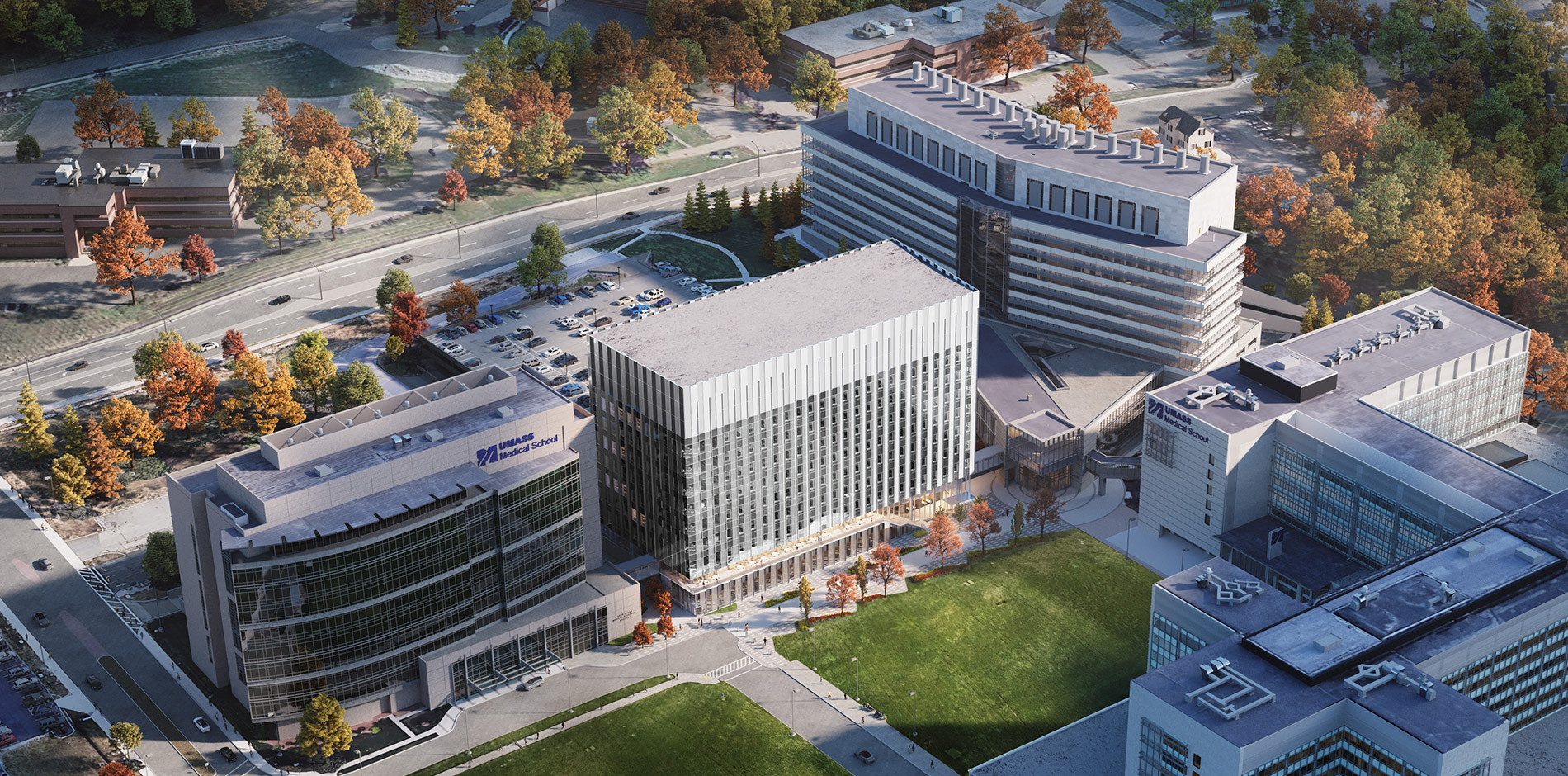Shawmut has broken ground on the University of Massachusetts Medical School’s New Education and Research Building, a nine-story biomedical research and education facility to support laboratory research growth and acceleration into new therapeutics for some of the most challenging diseases that humans face.
In partnership with architecture firms ARC/Architectural Resources Cambridge and ZGF, as well as the UMass Building Authority, the nine-story, 350,000 square-foot, state-of-the-art building will support the development of therapeutics in a high-performance, sustainable environment. The complex will feature program space for a projected 77 principal investigators, an FDA-compliant manufacturing facility for clinical trial therapeutics, research space, including wet labs, benches, exhaust hood alcoves, linear equipment rooms, environmental areas, as well as administrative offices, collaboration spaces, and conference rooms.
“UMass Medical School is home to some of the world’s leading researchers and educators, and we’re proud to build a leading-edge complex that will support their mission of advancing the health and wellness of communities throughout Massachusetts and across the globe,” said Kevin Sullivan, Executive Vice President at Shawmut. “The New Education and Research Building will enable immense growth and increased development capabilities that will contribute to extraordinary research and discoveries well into the future.
Designed to meet ambitious sustainability goals, including targeting LEED Gold certification with aspirations to net zero energy use, the building’s architecture integrates high-performance systems with a double-skin façade and geothermal heat pumps. The interior design emphasizes natural daylighting and transparency, active circulation, and generous social and interaction spaces to foster a productive, healthy environment for discovery and innovation.
“The New Education and Research Building plays a key role in the future of our institution, as outlined in our strategic plan,” said UMass Medical School Chancellor Michael F. Collins. “By co-locating strategic research programs and leveraging the power of collaboration, we will be able to fulfill our vision of life-changing therapies for some of the most intractable diseases we face.”
Slated to open in 2023, the New Research and Education Building will connect the Lazare Research Building and the Albert Sherman Center on the second level through a new system of sky bridges while also completing the west face of the Campus Green. Once open, the complex will house the Horae Gene Therapy Center; Departments of Neurological Surgery, Neurology, and Neurobiology; the Program in Molecular Medicine; and a new Program in Human Genetics & Evolutionary Biology among others. It will also permit campus expansion of facilities to help meet the needs of the commonwealth and the nation for physicians, graduate nurses, life sciences researchers, and other health sciences professionals.
